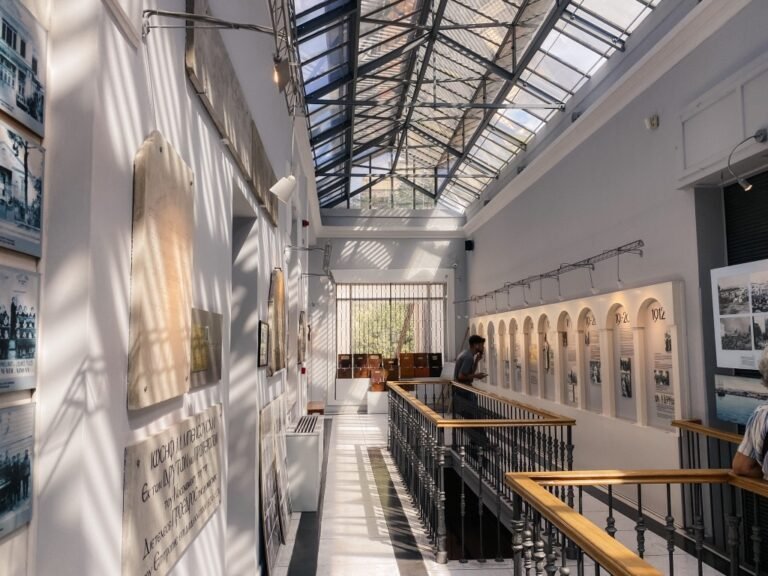This article may contain affiliate links. When you purchase something we recommend, we make a small commission. You don’t pay anything extra. 💘 For more details, check out our Terms of Use page.
Crete is a place you can’t help but visit again and again.
Due to its size, it is best to think of Crete as western and eastern, since traveling from one end to another takes time.
A lot of visitors chose to visit certain parts of Crete each time since there is so much to see and quite a bit of driving involved.
After dozens of trips to Crete island in the summer, spring, and winter, including a long-term stay of 6 months, and for various reasons, including work and travel for pleasure, there are so many more places I want to visit.
Western Crete includes some of the most well-known and famous cities, and sights. Here are some of the tips, information, and must-see spots I would recommend for first-time and returning visitors to western Crete.

Table of Contents
ToggleHow to get to Crete
Being the largest island in Greece, Crete enjoys plenty of options to reach it! Depending on the time of the year you will have a range of transportation choices.
Ferry to Crete
Ferry connections to Western Crete run between Athens (Pireaus Port) and Souda (a few kilometers outside Chania). The journey takes approximately 9 hours overnight, and it is highly recommended you book a cabin if you want to reach Chania refreshed! However, watching the sunrise over the Aegean is going to be worth it if you are traveling on a budget.
During the summer months, a faster 6.5-hour service runs between Piraeus and Chania through Minoan Lines.
💡 Tip: Make sure to book your journey in advance as these are popular routes.
Flights to Crete
If your adventure to Greece starts in Athens do not fear, year-round flights between Athens and Chania run 5-6 times a day. However, it might help to book in advance if you are planning your trip to Western Crete during national holidays, like the 15th of August, or the first weeks of June.
You can also fly directly to Chania from several international destinations – there is only one little catch. You can only do so during the summer months. Over 50 European cities offer direct routes to Chania between April and October. There are also flights to Heraklion, in the central part of the island that might be suitable depending on your budget and itinerary.
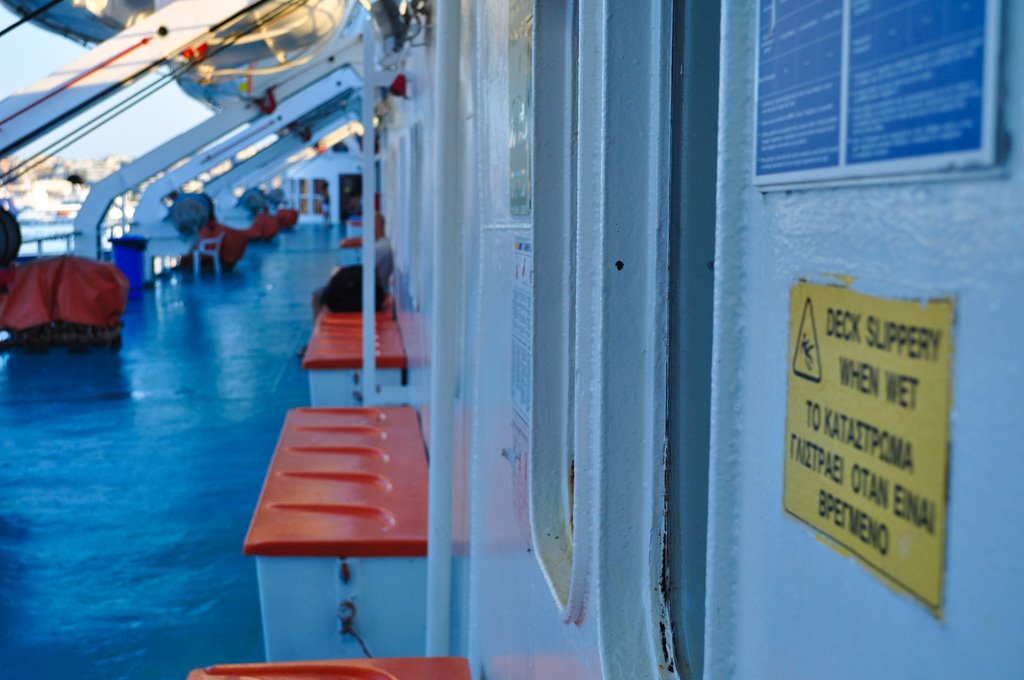
How is the weather in Crete?
Crete enjoys close to 300 sunny days a year. Just like the rest of Greece, Crete has a mild Mediterranean climate with hot dry summers that can last from April to October, and short mild winters.
During the summer months, Western Crete might experience heatwaves where temperatures soar above 40 C (104 F), but luckily, on most summer days the temperature stays around 26 C (79 F) and if that’s still too hot, you can find some of the best beaches in Europe just a few steps away to cool off.
At the same time, don’t let the mild weather fool you, half of Crete is covered in high mountain ranges, hence even at the height of summer, you might be able to spot a few snowy mountain peaks.
In other words, there isn’t a wrong time to visit Crete!
Getting around the island
Getting around Western Crete can be a tricky affair. Although relatively a small area, the terrain between the north and south changes dramatically. The north part of Crete is connected west to east through the E75 highway. However, the westernmost part of Crete has lots of remote and hard-to-access corners. Likewise, getting from the north part of the island to the south, you will cross the White Mountains, with lots of twists and turns on the way.
Renting a car
By far the best way to experience Crete is by rental car. A lot of the best beaches are in harder-to-access remote parts and having your own vehicle will allow you to get there faster, easier and at times most convenient to you. For car rentals, I recommend checking out Discover Cars.
Public bus service
A number of popular tourist destinations can be reached by the public bus network. The intercity bus network, or KTEL, offers a reliable service, with big buses that offer AC and sometimes even WiFi onboard. It can be a little tricky to figure out the time schedule though. If you are planning to use Chania as your base and go on daily excursions around western Crete, the bus network can be a great alternative to hiring your own car. It is best to arrive early and double-check the time schedules in person.
ATVs and scooters
Although a popular alternative to a rental car in other Greek islands, I would not recommend hiring a scooter or an ATV in Crete, as they cannot be driven in high-traffic areas. They are also less useful when it comes to long distances (which Crete has plenty of). If you are not planning on driving 3+ hours to reach these destinations, however, it might be a great option for you.
OUR RECOMMENDATIONS
Visiting Crete? Explore useful services
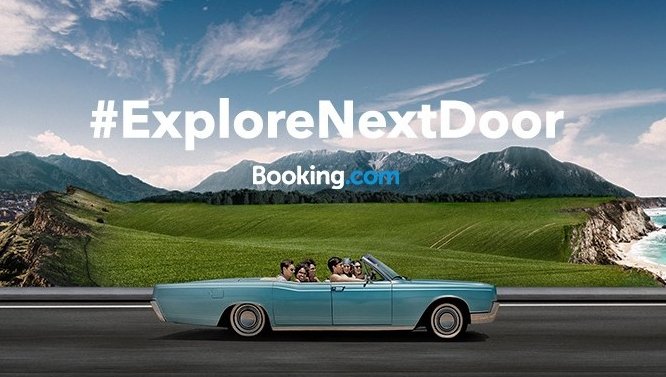
Find your dream hotel
The best place to find your next apartment, hotel, villa or accommodation option. Booking.com is the preferred way to book your ideal stay.
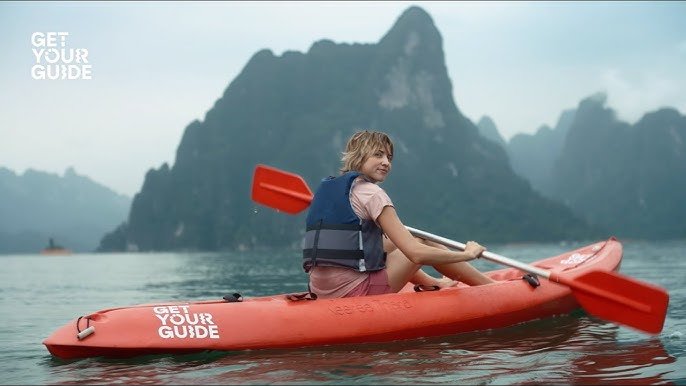
Find your next experience
Make the most of every opportunity to travel, learn, and explore. Find cultural experiences, sights, and attractions anywhere you are.
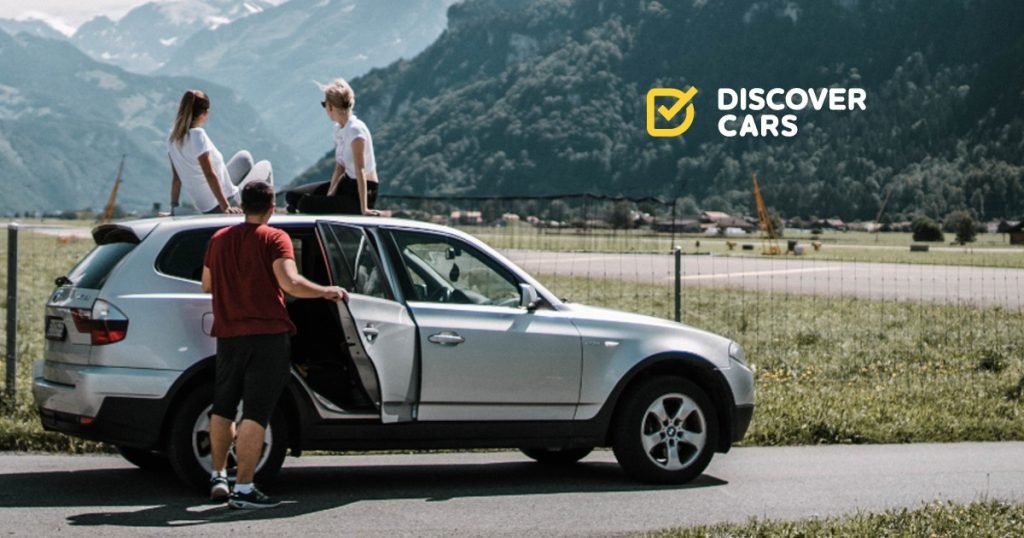
Find the perfect rental car
With no hidden fees, free cancellation and comparisons across all major car rental companies. Saves you time and money.
Differences between the North and South Coast of Western Crete
A very common observation after visiting Crete is how quickly the landscape changes. You might drive relatively small distances and in the blink of an eye, the desert turns into pine forest, that gives way to mighty mountains, and before you know it you are crossing above a gorge to yet another tropical-looking beach. I know, you think I am exaggerating but you will witness it yourself.
The north coast of Crete is where all the major cities are found. The terrain is relatively flat and very easy to drive west to east. In contrast to the southern coast of Crete. A long chain of mountain ranges runs across the middle of Crete, making any trips from north to south a little more scenic! Don’t worry, this means Crete has a lot of beautiful gorges, mountain villages, natural springs, and caves to explore! In other words, you might want to go ahead and pack a pair of hiking shoes with you.

Things to Do in Western Crete
Crete is a destination that I could visit forever and still find something new to discover. There are endless activities and sights to see. Western Crete is home to the cosmopolitan Chania that has survived through the ages with a distinct culture, but it’s also home to remote beaches, beautiful mountains to hike, and delicious local herbs that are added in heaps to local dishes. The most unique part about Crete is that every corner has a story to tell. Wherever you go, you will notice a little fortress, memorial, or chapel that may seem insignificant at first but has played an important part in Cretan history.
Visit the Beaches
- Elafonisi Beach
Known as the pink sand beach, Elafonisi is a must-see in Western Crete. About a 1.5-hour drive from Chania, Elafonisi is best enjoyed as a day trip. Like a lot of Greek beaches, Elafonisi is organized, meaning you will be able to hire an umbrella and sunbed for the day for approximately 10 euros.

- Falassarna Beach
Picture tropical paradise meets the Mediterranean, that’s how Falassarna can be described in a few words. A popular sunset spot amongst locals and visitors alike, Falassarna Beach turns into a big beach party at night.
- Seitan Limania Beach
Often regarded as one of the most picturesque beaches in Crete, Seitan Limania is known for its dramatic cliffs and crystal-clear blue waters. Fun fact: This beach became Instagram famous in mid 2020s, and has since made every list. Before that, it was a fairly local spot, due to the fact that it is quite hard to reach.
- Georgioupoli
The beach of Georgioupoli has a lot of positive features, including its easy access, 9km sandy stretch, and amenities. It is great on a day when the wind doesn’t blow from the north and is overall busy.
- Ombrogialos
Just far enough from Chani to avoid the crowds, this semi-beach spot features incredible turquoise waters and a small taverna for sustenance. There is no “beach” space to lounge around but it will satisfy snorkellers, divers, and those who seek a bit more exploration during their holidays.
- Marathi
When the wind blows, Marathi beach can be a great option. Located in Souda Bay, it has a long stretch of sand and amenities.
- Agioi Apostoloi
The closest beach to Chania, the stretch of golden sand from Agioi Apostoloi is an excellent option for families with children due to their shallow and warm waters. But.. there are plenty of amenities and nightlife options if you are looking for something different.

- Gramvousa Island
Gramvousa is a little uninhabited island at the northwestern tip of Crete. Although a little harder to reach than most other beaches in Crete, it will give you an old-Greece feel. The crystal-clear blue waters and white sand beaches on the island make it an ideal spot for snorkeling and relaxing, however, if you happen to be up for a real adventure you can hike the short distance to the Venetian fort on the island.
💡 Tip: Gramvousa and the neighboring Balos are better reached by boat – they leave from Chania. Beware a lot of rental car companies have policies against driving to Balos!
- Balos Lagoon
Perhaps one of the best beaches to visit in Greece if you are not a fan of deep waters is Balos. A beautiful nature reserve and lagoon, Balos is consistently voted one of the most unique beaches in Greece to visit. Combine it with your boat excursion to Gramvousa to avoid the steep hike down on a hot summer day.
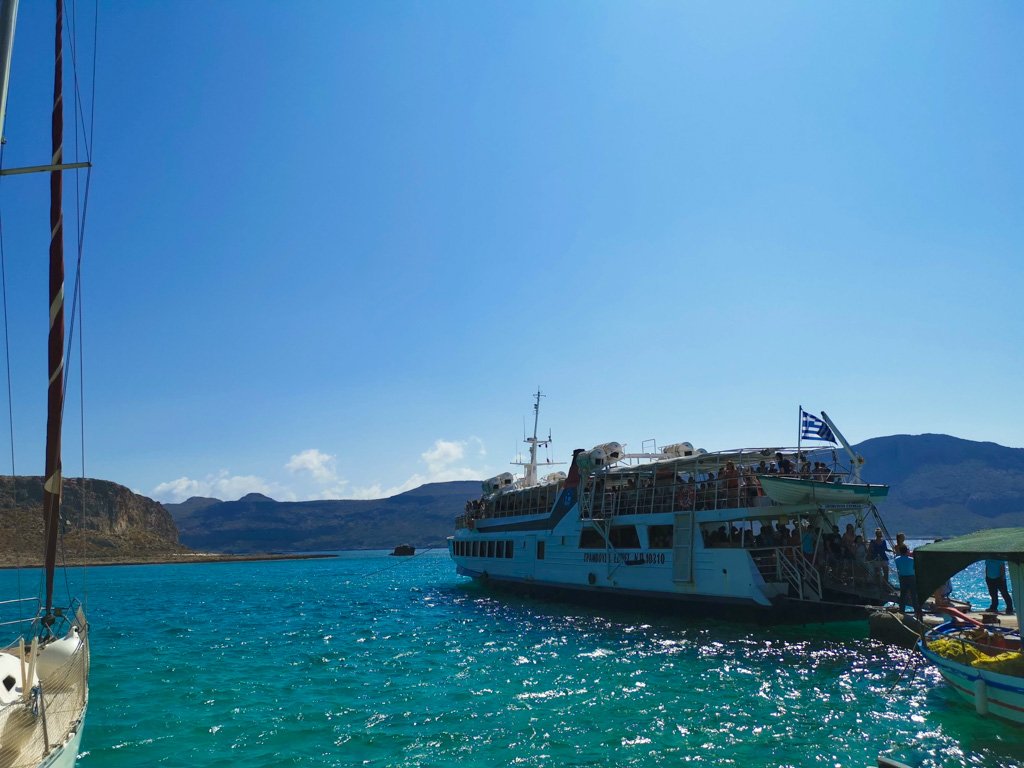

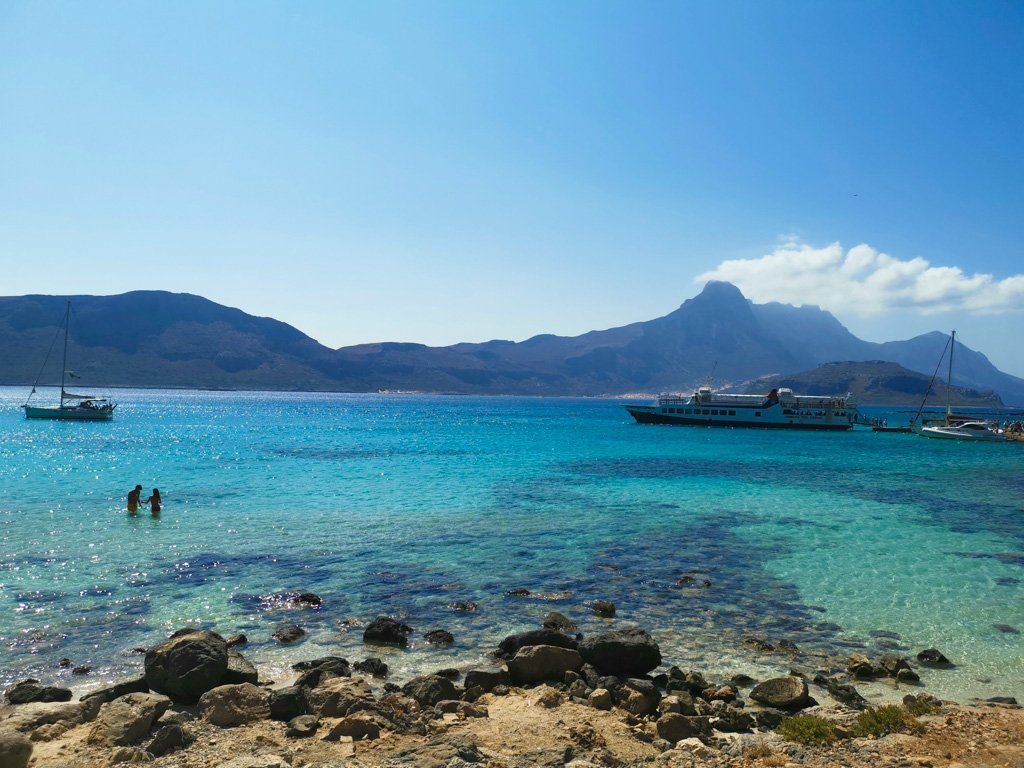
Explore the cities
Chania
There is no better spot to study the many conquerors of Crete than Chania. One glance, and you will find the beautiful Venetian harbor with the emblematic lighthouse, Byzantine churches, Roman-style agoras, Ottoman mosques, and fortresses.
Chania is the best spot to base yourself if you are visiting Crete for the first time. You will be able to catch a bus to all the best spots in Western Crete, and no matter where you choose to stay it’s unlikely it will be more than 10 min away from a beach.
Some of the very best experiences in Chania:
- Taking a stroll around the Venetian harbor at night – you will find that Chania takes a new life at night. If you are lucky, you might be able to watch a live Cretan dance show, that takes place most summer nights.
- Visit the knife-makers at Sifaka Street – A staple of Cretan culture and an integral part of the Cretan dress is a V-tipped knife. This century-long tradition is kept alive by a few craftsmen who continue to make these peculiar-looking knives to this day.
- Satisfy your sweet tooth at Koukouvagia – About a 10-minute drive away from the Old Town you will find this peculiar sweets shop. Themed after the local owls, Koukouvagia was used as a viewpoint during the Nazi-occupation of Crete, for its panoramic views of the harbour.
- Taste local delicacies at the Central Market – one of the best places to buy souvenirs for the ones in your life whose love language is food. You will find local olive oil, oregano, Cretan graviera cheese, olives, sweets, thyme honey, and many more. *(The local market closed for renovations in 2022, with a tentative reopen date of late 2025)
If you need a little more inspiration for things to do in Chania, check out a few more here.



Rethymno
It’s hard to have a neighbor like Chania, taking away all the glory and attention. If you are looking for a more relaxed vibe, then you will love Rethymno. Yet another stunning Venetian harbour adores the old town of Rethymno, with a fortress, known as Fortezza at the top!
Rethymno beach stretches out about 14km (9 miles) east of the Old Town, so if you are looking for a more accessible destination Rethymno combines beaches, history, and shopping all within a few steps of each other!
Go Hiking & Explore Nature in Western Crete
One of my favorite trivia about Greece is how it’s one of the most mountainous countries in Europe with over 80% of its landmass covered in mountains.
Crete has an astounded 400 gorges to explore. Some are steep, some are flat, some long, some short, and some are a must-see. These are just a few I have hiked in the past and recommend to every visitor.
And for anyone looking to enjoy nature without the need to put your hiking boots on, I have some suggestions for you too!
Samaria Gorge
By far the most famous gorge in Crete, Samaria, will take you through the stunning White Mountains. The trail is open from May 1st through to October 30th, however, beware that temporary closures occur when there are adverse weather conditions.
Samaria National Park is part of the UNESCO Biosphere Reserve (think UNESCO heritage site but for nature!), and it stretches for approximately 16km (10 miles) making it Europe’s second-largest gorge.
Joining an organized tour is the best way to hike Samaria. The tour bus drops you early in the morning at the starting point near the village of Omalos. At the end of your hike, you will have reached Agia Roumeli, a beautiful village on the Libyan Sea, that is completely inaccessible by car. Unless you feel like hiking some more, a short ferry ride will take you to Sfakia, where the tour buses pick you up and drive back to Chania!
Imbros gorge
If you are looking for a quicker, and easier hiking fix, you might want to consider hiking Imbros Gorge. It stretches for approximately 8km (5 miles) and stays open year-round. This is a great hiking trail in Western Crete if you are visiting with younger children.
A little-known fact about Imbros is how it played a strategic role during the Second World War, when ANZAC (Australian and New Zealand) and British troops were stranded in Crete. Cretans famously helped a lot of soldiers to avoid being found by the Nazis. With the help of locals, hundreds of troops were secretly evacuated by sea to Egypt, through the Imbros gorge.
Kournas Lake
If you are looking for a quick nature excursion lake Kournas is the perfect day trip. This freshwater lake used to be famous during antiquity. Many legends have been written about its “bottomless” waters, lake nymphs and spirits! You will find a lot of traditional lake activities, such as hiring small boats to paddle around the lake, feeding the ducks, or even hiring a sunbed if you are into freshwater swimming. If you visit later in the day, try some of the really good restaurants on shore that are famous for apaki, a traditional smoked pork dish.


The springs of Argiroupoli
After all the beach excursions you might be craving some fresh mountain air. The springs of Argyroupoli are only a short drive away from Rethymnon. Here you will find a short track that will take you through dense vegetation, waterfalls, and of course lots of delicious fresh mountain water springs! Another cool spot to explore is the nearby village of Nisi, an abandoned village that is now taken over by the friendliest Cretan goats and sheep. As always, mountain villages in Crete (in my opinion) have the most delicious authentic food, so you have everything you need for a perfect Cretan getaway right there!
Explore Historical & Cultural Sites
For history buffs, Crete offers a wide range of historical and archaeological sites to explore.
- Therissos village
This little village may seem insignificant at first, but it played a hugely important role during the War of Independence. It not only has a special place in Cretan history, but I consider it one of the gastronomical must-tastes (is that a thing?) in Crete.
- Agia Triada Tzagaroli
This 17th-century monastery will impress you with its stunning architecture. Built by Venetians, in a traditional Athonite style, this little monastery has changed hands a few times. Today, monks make olive oil and wine that you can taste and purchase on site!
- World War II cemeteries
If you want to learn about Cretan culture in a few minutes, you only need to look up the battle of Crete in history books. During the Second World War Crete became a defining battleground. Today, you can find the Allied cemetery in Souda Bay, and the German War cemetery of Maleme a few kilometers outside Chania.
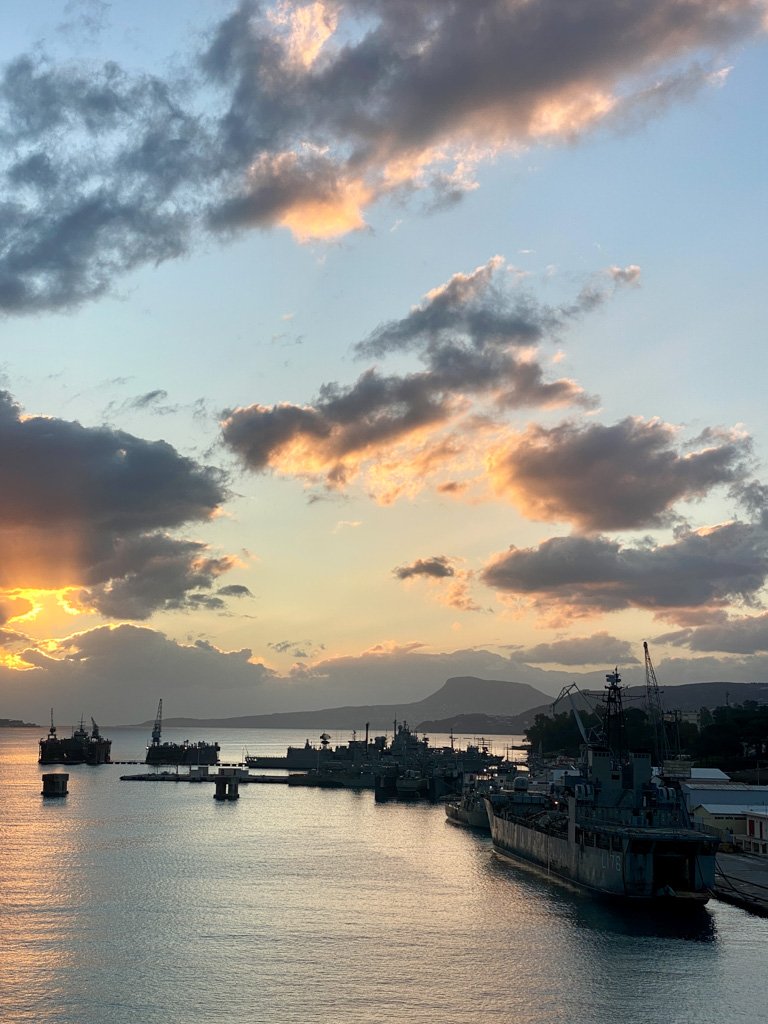

- Aptera Archaeological Site
Explore the ancient ruins of Aptera near Chania, where you can wander among remnants from Minoan, Roman, and Byzantine times, including impressive Roman cisterns and a Byzantine church. It is best to visit this with a guide so you can learn more about the region and its history.
- Frangokastello Castle
A castle on the sand, Frangokastello is free to enter, and stands out for its dramatic setting and importance.
- Monastery of Gouverneto
Set in a serene location in Souda Bay, this ancient monastery boasts beautiful Byzantine architecture and frescoes, offering a peaceful retreat into the past. You can combine your visit with a short hike to Katholiko Bay and swimming in the area. Make sure to bring water and snacks.
- Ancient Polyrinia
This site is one of the least visited places, but it is semi-on the way to Falassarna and Elafonisi. It was once one of the most important city-states of Crete and is worth reading more about.
- Monastery of Arkadi
Near Rethymno, this historic monastery played a key role in the Cretan resistance against the Ottomans and features beautifully restored architecture. Make sure to spend some time reading about the history of this fascinating place.

- Chrysoskalitissa Monastery
This monastery is right next to Elafonisi Beach. Built on a huge rock at the top of the hill, with a small museum and great views of the area. It is currently a nunnery. The name translates to “golden step” which refers to a legend that all 98 steps to the monastery were once gold. Another version of this story includes that one of the steps is still gold, yet only true believers can see it.

Explore hidden villages
The truth is, as much as I love Chania, the villages of Crete are where you will find the real Cretan experience. You will see people proudly wearing their traditional dress, a rare sight in modern Greece. You will see old grandmas, with hands as gnarled as the olive trees that adore this land making fresh bread in woodfired ovens. You will find little-known coves, beaches, and spots that have escaped the eyes of tourism, but most of all… you will experience Greek hospitality at its finest.
Beyond the main cities and popular beaches, Western Crete specifically is home to wonderful, quaint little villages. These often require a bit of a drive towards the mountains, or a scenic drive song the coast.
- Vrysses
This quaint little village that nowadays boasts only some 730 permanent residents is one of my favorite places to visit while in Western Crete. Coastal villages seem to take all the attention but in the mid-summer heat, the breeze under the sycamore trees in a little Greek village square is divine. Vrises hosts several traditional festivals to enjoy. But wait there’s more! A few minute’s drive away you will find one of the best restaurants in Crete, Ippokoronion. A favorite among the locals, chances are you will not find another tourist on the premises.
- Aradena
Located near the Aradena Gorge in Western Crete, this ghost village is an intriguing spot to visit. Abandoned after a vendetta between two families in the mid-20th century, Aradena’s stone houses and narrow streets are now frozen in time. You can explore the village, cross the impressive iron bridge over the gorge, and even take a hike through the gorge itself if you’re up for a challenge.
- Loutro
This is a must-see for everyone visiting Crete. Located on the southern coast, of western Crete, it is a tranquil space. What makes this visit especially worth it, is the fact that you will need to brace the mountain passes and narrow roads to get to the other side. You can swim or unwind in one of the local tavernas.
What to order for food
I couldn’t omit one of the most important things everyone has to do in Crete, and that is trying the amazing cuisine. Every time I visit Crete I make a new “must-eat bucket list”. Let me put it this way, I have never left a Cretan restaurant without discovering a new favourite.
- Gamopilafo – literally translating to “wedding pilaf” this thick and warm rice dish was traditionally served at … you guessed it weddings!
- Marathopitakia – the Cretan twist to the traditional spanakopita, marathopitakia are little pastries filled with local herbs. You can find those at most bakery shops!
- Stakovoutiro – another Cretan staple, this buttery hot dish is sure to send your taste buds to heaven. Made out of local pure sheep and goat milk, it’s butter like you have never tasted before.
- Graviera – the flagship cheese of Crete, graviera is a hard cheese made of sheep and goat milk. It’s been described as the Greek Gruyere, with the main difference being it has a small kick at the end. You will find it in different varieties, the one mixed with Cretan oregano is my favorite!
- Dakos – another Cretan staple that you will find in every corner is dakos. Made out of barley rusks topped with grated tomatoes, olive oil, copious amounts of cheese (usually feta), and of course oregano. Think Greek salad on a rusk!
- Kohli – this one is by far the most controversial on the list. This dish includes fried snails in an olive oil sauce, sometimes garnished with local herbs.
- Rakomelo – although not a food, its consumption at every hour of the day will surely pique your interest. This is the local alcoholic drink that combines raki (grape distillate) with honey! It is customary for restaurants to offer it as an aperitif at the end of your meal (free of charge of course!). Another aspect of Cretan hospitality that everyone loves.

Where to stay in Western Crete
Now that we have confirmed that you will be visiting Crete, let’s discuss where to stay.
The two most popular spots are in the northern part and they are Chania and Rethymno. They are both perfect for first-time visitors.
- Chania: A vibrant city that combines historical charm with modern amenities, making it an excellent base for exploring the entire western region of Crete. I would recommend Chania as a base for first-time visitors, who want a mix of culture, nightlife, and easy access to nearby beaches.
- Rethymno: Offering a more laid-back atmosphere compared to Chania, Rethymno is ideal for travelers who enjoy a blend of history, culture, and beach relaxation. Its central location also makes it convenient for exploring both the western and central parts of Crete.
But what about areas outside of these two main cities? There are plenty!
- Platanias & Agia Marina: These are neighboring coastal areas west of Chania that are popular for their lively beach scenes, resorts, and nightlife. They are close to the west coast, so you have closer access to Balos, Elafonisi, and Falassarna.
- Kissamos (Kastelli): If you don’t mind being even further west and a bit far from Chania, go for Kissamos.
- Georgioupoli: This coastal area is located on the other side of Chania, towards Rethymno. It has a wide range of accommodation options and can be very busy with tourists during the season. Due to its location, it is best if you want to explore more of the south coast or move east towards Rethymno.
Seeking more solitude, peace, and outdoor excursions? Consider locations on the southern coast of Crete. These will require a bit more of a drive to get there after arriving, so take that into consideration when planning your flight or ferry route.
- Hora Sfakion: A a gateway to the rugged and dramatic landscapes of the south. It’s ideal for those who enjoy remote, scenic environments and are looking to explore gorges and traditional villages.
- Palaiochora: Another great option for beaches, and charming town atmosphere.
Where to Stay in Chania:
- Casa Delfino Hotel & Spa: A luxurious boutique hotel located in a 17th-century Venetian mansion, offering elegant rooms and a rooftop terrace with stunning views.
- Serenissima Boutique Hotel: A charming, intimate hotel in a restored 16th-century building, known for its excellent service and stylish décor.
- Monastery Estate Venetian Harbor: A unique boutique hotel that combines modern comfort with historical architecture, featuring a spa and indoor pool. Amazing location right in the Old Town, and top-notch food at their restaurant. Perfect for a romantic getaway.
- Kydon, The Heart City Hotel: A centrally located hotel perfect for families and business travelers, offering modern amenities and spacious rooms.
- Kiani Beach Resort Family: A luxurious and family-friendly resort.
- Domes Noruz: An adult-only, luxury hotel, perfect for honeymooners and couples, with private pools, access to the beach, and great service. There is also a Domes Zeen, nearby that is open to families.
- Elia Hotel & Spa: Just outside the village of Ano Vouves and only 25km from Chania Town. A restored Venetian house, with spa treatments on offer and a very relaxing atmosphere.
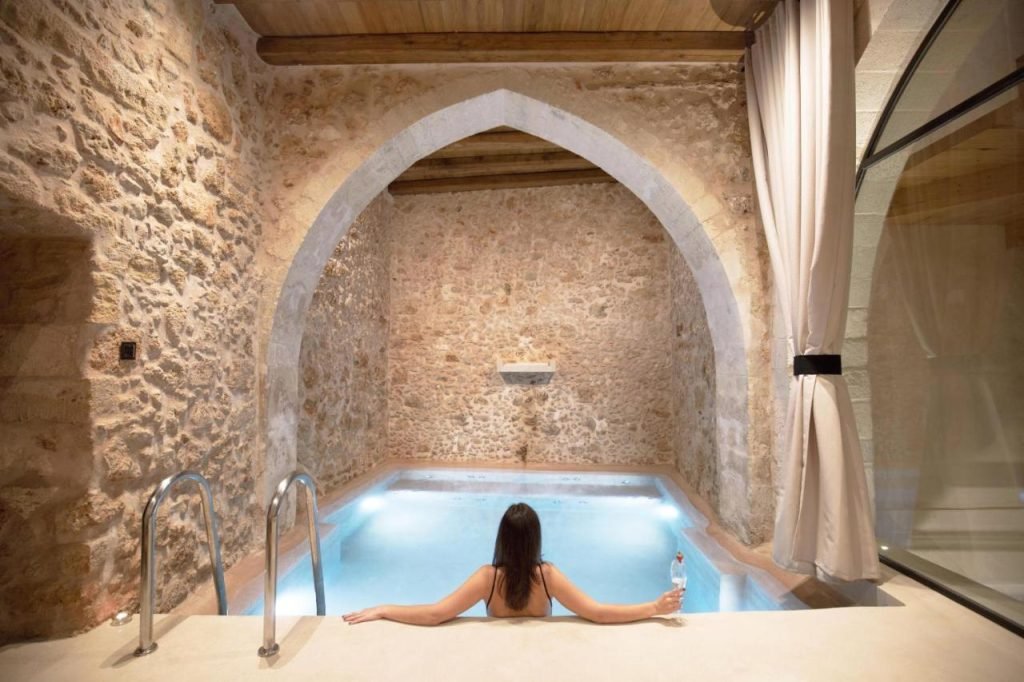
Where to Stay in Rethymno:
- Rimondi Boutique Hotel: This luxurious hotel is set in two adjacent Venetian mansions, offering a blend of historic charm and modern amenities. The architecture is incredible and prices are reasonable for the location and amenities on offer.
- Avli Lounge Apartments: A unique boutique hotel featuring individually decorated suites, located in the heart of Rethymno’s old town.
- Casa Moazzo Suites & Apartments: A romantic choice, this hotel offers spacious suites with elegant décor, perfect for couples.
- Atlantis Beach Hotel: Situated right on Rethymno Beach, this hotel offers a beachfront experience with modern facilities, ideal for families.
- Stolidi Mou Treehouse: This fairytale cottage is built around a stunning oak tree. Very private and relaxing, great for couples or small family gatherings.
- Enagron Ecotourism Village: Enagron is a destination in itself. Located in a small village in the mountainous region of Rethymno near Axos. it is both a relaxation paradise and a way to connect with and learn about sustainability. Make sure to inquire about cooking classes, hikes, and other activities.
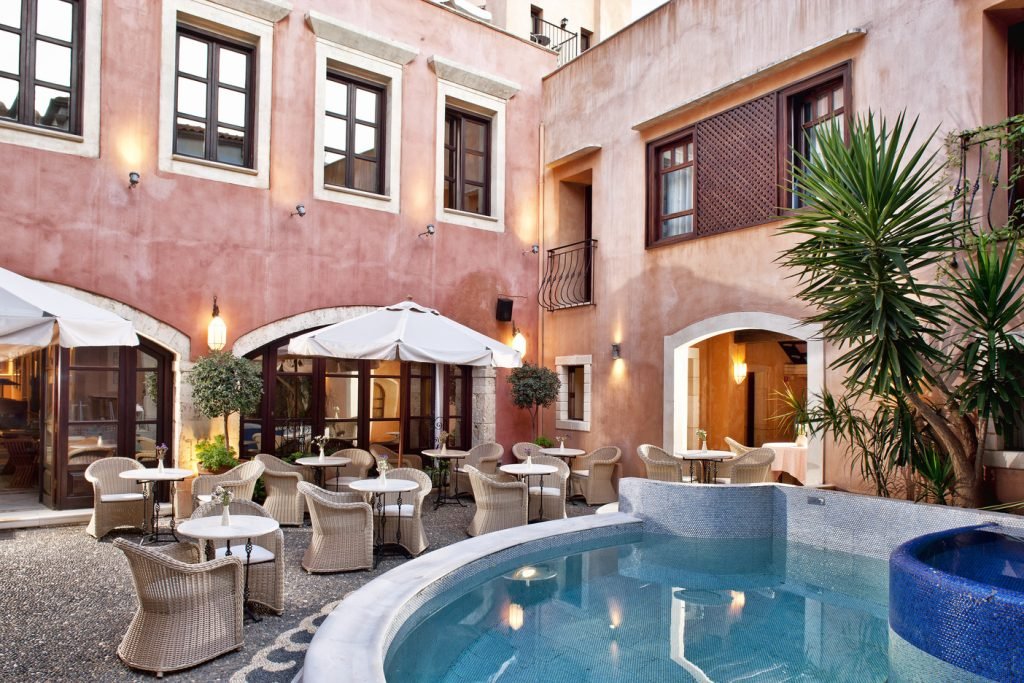
Where to Stay in Platanias or Agia Marina:
- Minoa Palace Resort & Spa: A luxury resort offering beachfront access, multiple pools, and a full-service spa, ideal for a relaxing stay.
- Thalassa Beach Resort: An adults-only hotel with a serene atmosphere, perfect for couples seeking a romantic getaway.
Where to Stay in Paleochora:
- Libyan Princess: A boutique hotel offering modern amenities and a relaxing atmosphere, close to the beach and town center.
- Aris Hotel: A family-run hotel known for its warm hospitality, beautiful gardens, and proximity to the beach.
- Manto Studios: Ideal for budget-conscious travelers, these studios offer basic, comfortable accommodations with kitchenettes.
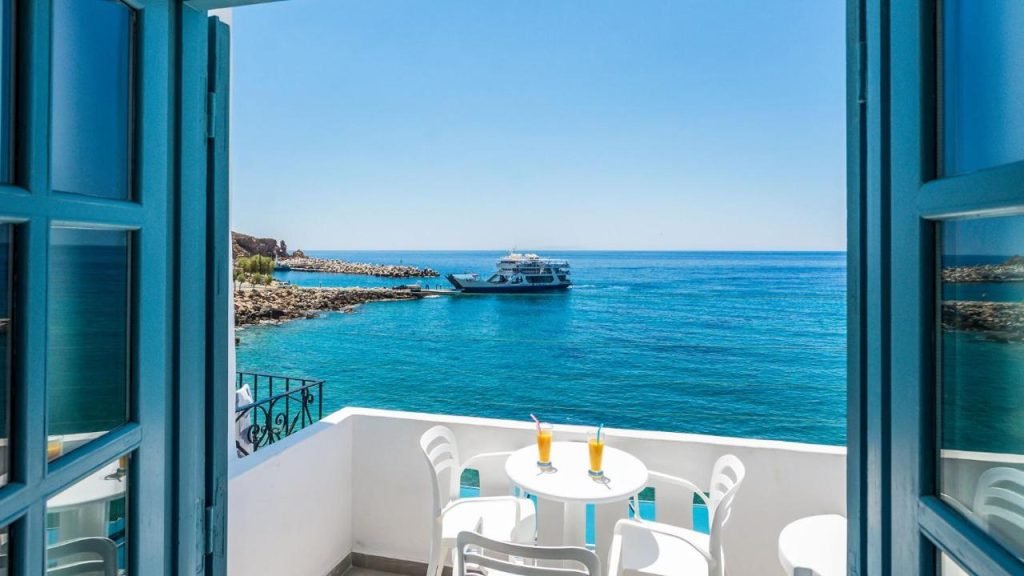
Where to Stay in Sfakia and Loutro:
- Daskalogiannis Hotel (Loutro): A simple yet comfortable hotel offering stunning views of the bay, ideal for a tranquil stay.
- Livikon Hotel (Sfakia): A family-run hotel in the heart of Sfakia, offering easy access to the harbor and hiking trails.
Where to Stay in Kissamos (Kasteli):
- Molos Bay Hotel: A beachfront hotel offering spacious rooms, a pool, and easy access to the town center.
- Balos Beach Hotel: Located near the famous Balos Lagoon, this hotel offers modern amenities and stunning views of the surrounding landscape.
- Aphrodite Beach Hotel: A family-friendly hotel with direct beach access, offering comfortable accommodations and a warm atmosphere.

Unique Activities to Have in Western Crete
One of the best things about Crete is that it is large enough that it receives thousands of visitors, yet there are spots and activities for a wide range of interests. That also means you might find a range of activities to try. Here are some of my favorites, that are either on my to-do list or have been completed already.
Quad aTV Safari in Rethymno and Chania Off-road fun, with professional guides, so you can explore areas hard to reach otherwise.
Catamaran Cruise: A superior way to see Balos and Gramvousa island. If you have a big group, I would recommend booking a private charter rather than a boat tour with big groups.
Scuba Diving Lessons: After picking up diving as a hobby a few years ago, I will use any excuse to visit Crete again for diving. A lot of divers I’ve met, rave about the spots on offer. In Western Crete, one of my first stops would be the wrecks around Souda Bay.
Lazareta Island Tour: A small uninhabited island that is visible from Nea Chora Beach. You can join a boat tour from the Old Town that visits the island and spend time, swimming and snorkeling. The history of the island is also interesting, as it was used to control the outbreak of lepers. Want to give the activity an extra level of difficulty? How about doing it on a paddleboard?
Wine Tasting Tour: There are many wineries worth visiting on the island, so a wine tour is a must activity. Pick according to your interests and location.
Cooking Class in Chania: Similar to wine tours, I think a cooking class is a great option when in Crete. If you are staying in Enagron, make sure to request or book one with them for a most authentic experience.
Olive Oil Tour: There is no Cretan cooking without olive oil. Make sure to visit an olive oil farm to taste, learn, and buy olive oil directly from the source.
Jet Ski to Balos Beach: Perfect if you are getting itchy while lounging around in Falassarna.
Horse Riding: Not a fan of Jet skiing. Falassarna has more options to choose from. Including horse riding on the beach!
Paragliding Tandem: I’ve never tried paragliding, so this would be a must for me on a clear day, to enjoy the view of Crete from above.
Kourtaliotiko Gorge and River Trekking: Hiking and swimming on the same day, with a visit to Kourtaliotiko Gorge to see the waterfalls.
ESSENTIAL INFORMATION
Must Know When Visiting Greece
- Emergency: Dial 112 for all emergencies. For police, dial 100. For ambulance 166. For fire dial 199.
- Language: English is widely spoken in most tourist areas. Common phrases to learn are “Kalimera” (Good morning), “Yia” (Hello and Bye – informal), and “Efharisto” (Thank you).
- Water: Tap water is safe in Athens, mainland Greece and a small number of islands. Always ask beforehand.
- Driving: Right-hand side, international driving permit recommended. Book your rental car with Discover Cars for the best rates and comparisons across all major and local companies.
- Accommodation: Booking.com for the most options on hotels, apartments and hostels. Free cancellation in a lot of places and no need to pre-pay. Great for their rewards points system.
- Islands: There are a lot of islands, spread out around the country. Start with a map or ferry service to get an idea of travel times. Ferry Scanner is the best for ferry bookings to the Greek islands.
- Activities: From cultural sights to day trips, food tours and city guides, use Get Your Guide.
- Public Transport: For Athens, use the Athens Metro. If you are not renting a car, use Trains (Hellenic Train) or KTEL (Public Buses) services.
- Domestic Airlines: The main airlines for air travel are Aegean Airlines and Sky Express. I recommend Aegean Airlines and its rewards program.
- Taxi: Always use a taxi app, instead of flagging down a taxi from the road. Use FREE Now (formerly BEAT).
- Culture: A siesta nap is still common in less touristy areas. This also means businesses will close between 2 PM – 5 PM. Except for hospitality businesses, everything is closed on Sundays.



